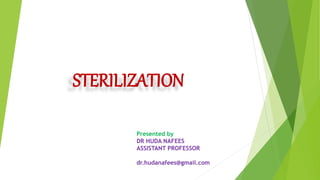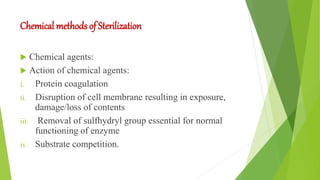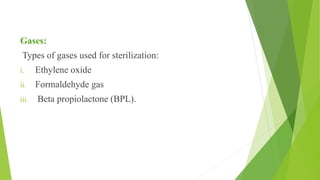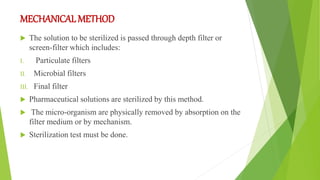This document discusses sterilization and various sterilization methods. It defines sterilization as making something free from all microorganisms, including bacteria and spores. It then describes different terms used in sterilization like disinfection, antisepsis, and discusses physical sterilization methods like dry heat, moist heat and radiation. Chemical sterilization methods using agents like alcohol, aldehydes, dyes, halogens and phenols are also outlined. Finally, the document briefly discusses the mechanical sterilization method of passing solutions through filters to remove microorganisms.






















